Samsung WB600 Review
Samsung WB600
With a 15x optical zoom packed into its relatively compact body, this is a great low cost 'travel zoom'.
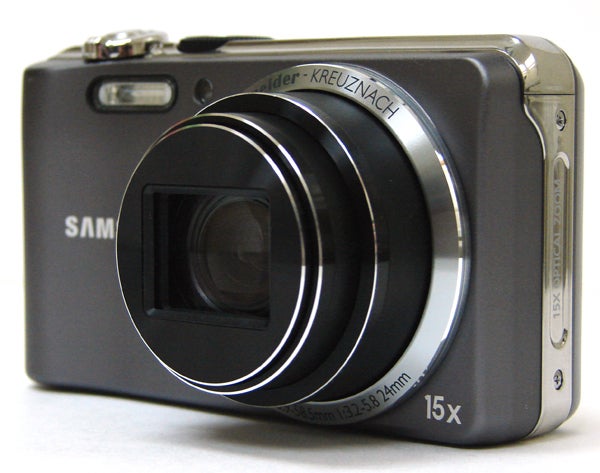
Verdict
Pros
- Good quality 15x optical zoom
- Great value for money
- Manual exposure controls
Cons
- Slightly thicker than some rivals
- Images are noisy even at low ISO
- Audio drops out in video
Key Specifications
- Review Price: £119.00
- 15x optical zoom
- 24 - 360mm Lens
- 3inch LCD screen
- 12.2 Megapixel
- 720p video recording
We’ve all wanted to get closer to our subjects than our compact camera’s weedy 3x optical zoom would allow at one time or another, but we may have been put off an alternative with a broader focal range by the perceived bulk that came with it. In the past couple of years however, all that has changed.
Announced last year, Samsung’s 12.2 effective megapixel WB600 charges into battle with Panasonic’s TZ camera series, for one, by virtue of shoehorning a 15x optical zoom into its compact 30mm ‘thick’ chassis, an improvement on its predecessor the WB500’s 10x. Like the competition it eschews mini DSLR/bridge camera styling by keeping the entirety of that long lens flush with the body when not in use, meaning it will still fit easily in an average pocket or handbag – the perfect travellers companion, it would seem. 
The key here is not how big the zoom is but what you can do with it. The WB600’s focal range is equivalent to 24-360mm in 35mm terms, suggesting it is as adept at wide angle landscape shots and group portraits as it is in capturing candid, up-close and personal portraiture, or shots of skittish wildlife that would be impossible with a more conventional 3x, 4x or 5x optical zoom. In this regard, it’s an equal to the stylish Fujifim FinePix F300EXR, which also has a 12 megapixel resolution, but the Fuji has a thinner body at just 22.9mm in depth.
Currently in the Samsung’s favour though is a very keen street price of just £120, a sizeable drop when compared to its manufacturer’s original 2010 asking price of £250, making it a real bargain. Especially when you add in the 3-inch LCD – an increase in size from its forebear’s 2.7-inches – 1280×720 pixels High Def video with dedicated backplate record button, and even less expectedly still, a smattering of manual controls. This includes newly-added aperture priority, shutter priority shooting modes, plus even a degree of control over manual focusing via a distance slider/toolbar, running from macro (as close as 3cm) to infinity. We also get a broader than average light sensitivity range starting out at ISO80 and extending up to ISO3200 at full resolution, plus the ability to individually adjust contrast, sharpness and saturation levels, if shooting in Program mode. 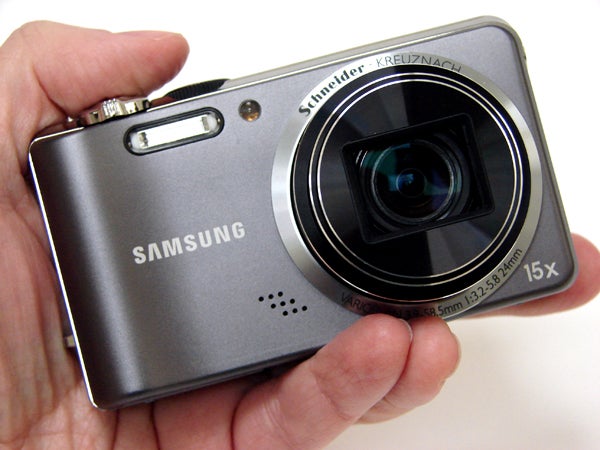
That said, in most other respects this is very much a snapshot camera that anyone will be able to pick up and start shooting with pretty much instantaneously, and we get both regular Auto mode and additional Smart Auto mode. The latter is the WB600’s compares scenes and subjects with on-board parameters and selects the most appropriate camera settings for hopefully an optimum performance for the given scene. Working on this latest generation model for video as well as stills, this comes across as fairly reliable, making the WB600 an able point and shoot aid.
Available in black, brown or silvery grey, we had the latter in for testing, which looks a bit drab at first glance. Still, the build quality is solid, despite a plastic construction and easily belies its modest price. A curved edge to the left hand side of the faceplate provides something in the way of a handgrip, although there’s no rubber padding this time as on the WB500. Three scored lines on the backplate provide a roughened surface for the thumb to steady itself on – but it’s no substitute for a proper grip. Then again, you’re almost certain to need two hands to shoot steadily with that vast zoom range, so it’s not too much of a concern.
To prevent the blurring effects of hand wobble/camera shake at maximum zoom, the WB600 comes equipped with dual (optical/lens shift and digital/software enhanced) image stabilisation. As per usual, though, we’d turn the software option off as it can degrade image quality. You can also turn the optical version off if so desired but generally you can leave it on all the time.
The most important physical controls here are logically enough located on the WB600’s top plate, set into a glossy chrome strip that runs its length and continues down to its base at either side. A large, slightly forward-leaning and springy shutter release button is encircled by a chunky zoom lever with a ridged forward facing ‘lip’ that provides just enough of a purchase point for the forefinger. Next to this, and slightly more inset, is a five pence coin-sized shooting mode dial, with just enough poking out either side of the chrome strip to get your forefinger and thumb around and give it a wiggle to your desired choice.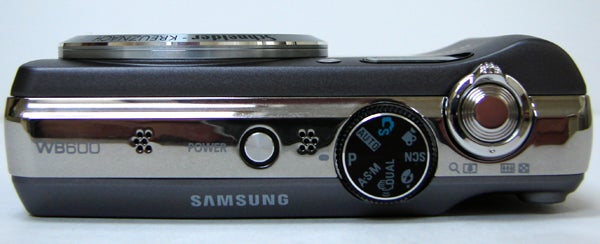
There is a gamut of in-camera options tailored toward taking people pictures, with face detection, smile and blink detection all featured. Faces can also be registered and lists of faces subsequently edited, which is quite neat.
To make the most of the unit’s 1280×720 pixels at 30 frames per second video recording, the WB600 features mini HDMI output. As per usual, the 4:3 aspect ratio screen image automatically crops to 16:9 when recording begins. A supplied cable can be used for hooking up the camera to your PC via USB, and also doubles up as a power lead, slotting into the adapter plug provided in lieu of a charger. This means that its rechargeable lithium ion battery needs to be recharged with the camera itself. So, even if you buy a spare battery, the camera will need to be out of action whilst you recharge it, which kind of defeats the purpose.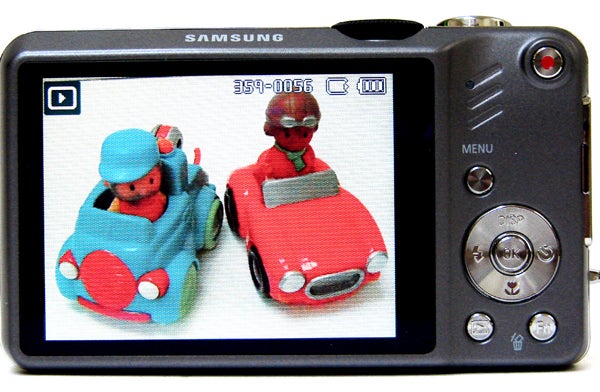
Press the WB600’s slightly recessed top plate power button and the WB600 readies itself for action in just under two seconds, which is commendably swift for its class. The rear screen blinks into life to provide a means of composition in the absence of any optical viewfinder whilst the lens barrel extends from storage flush with the body to maximum wide angle setting. As one would expect, there’s only the option to shoot JPEG here, with RAW off the menu, but you do at least get three compression levels to choose from.
A half press of the shutter release button and auto focus (AF) points are highlighted in green. It must be said that the WB600’s operational noises are, well, noisy, so we appreciated the opportunity to turn them off within a couple of minutes of first using it. Go on to take a shot and a full resolution, least compression JEPG is committed to memory in just over a second or so. Impressive stuff.
We also liked the fact that the full extent of the zoom is accessible when shooting video, despite the fact that there’s a low operational buzz when adjustments are made. However, as a bit of a cheat, the WB600’s audio drops out when zooming begins and then kicks in again when any adjustments are finished. So you can have the sound or the zoom, but not both at the same time. We see the logic here but ultimately think it’s a bad move. 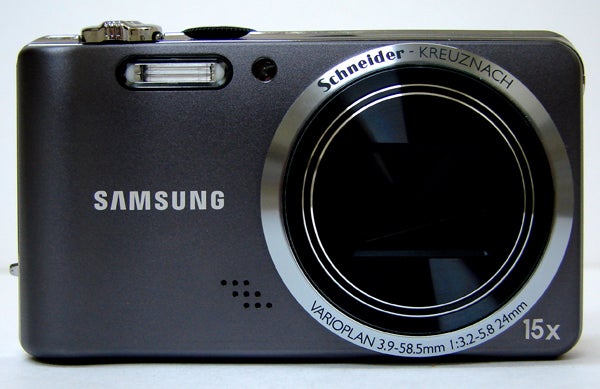
Colours from the Samsung are generally on the warm side and flatteringly so, though we did notice some cool blue daylight tones creeping randomly into certain images. This is nit picking however, as in general terms and for general scenes image quality is much, much better than expected, sharpness well maintained from edge to edge even at maximum wide angle and crisp results achievable when shooting handheld at the maximum telephoto setting. Even bridge cameras costing two or three times the price deliver their fair share of soft results in similar circumstances. They also mostly suffer from barrel distortion at maximum wideangle. Even with its 24mm equivalent setting, the WB600 doesn’t.
A bit of creative fun is provided by the regular Samsung feature of the Photo Style Selector digital effects options. With ‘Normal’ being the default setting, other options on the same toolbar allow colours to be rendered more vivid, appear ‘retro’, cool or even ‘calm’ in tone. A pleasant surprise on what is in most respects a beginner friendly auto everything snapper, even if at times some of the colours can start to look slightly unnatural. Furthermore, Smart Filters selected from further down the same toolbar allow the increasingly ubiquitous toy-town like ‘miniature’ effect to be applied to images, along with a vignetting (corner shading) and fisheye effect.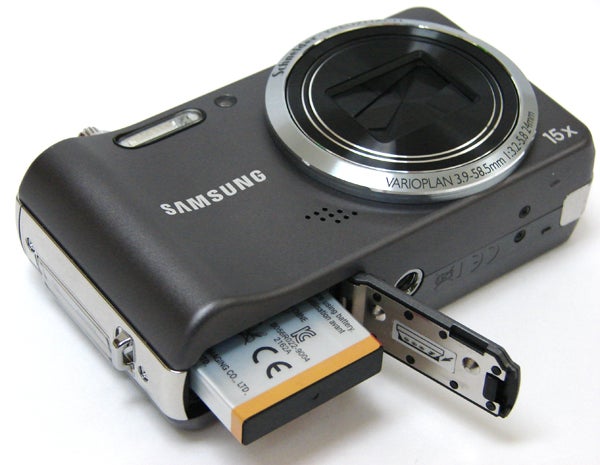
Slightly disappointing however is the WB600’s low light performance. There is noise/grain even in evidence at the lower settings, which start out at ISO80 and incrementally progress towards a top whack ISO3200. Above ISO800 the results are verging on unusable for anything but the most casual of snaps intended for Facebook only.
”’Verdict”’
With a build quality more robust than its asking price indicates, the WB600, whilst not exactly the ‘sexiest’ big zoom compact we’ve ever seen, comes across as offering exceptional value.
The plus points here are, obviously, a big internally stacked zoom with a broad focal range, pocket sized dimensions yet a robust and solid build, and a greater range of specifications, including some manual control options, than usually found for similar outlay. The ‘only’ negatives are the audio dropping out when zooming during video recording, some quite prohibitive noise which creeps in at lower ISO settings than one would expect, occasional white balance issues and the fact that design-wise it’s a bit of a lump, though not prohibitively so if you really are looking for a capable ‘travel zoom’.
So, chunkier than more fashion conscious rivals, the WB600 nevertheless offers more photo and video creation options than similarly priced competitors. This makes it very hard to knock it. Incidentally, if you have got a tad more to spend there’s also a very similar WB650 model available, which boasts the same zoom range but adds GPS and an AMOLED view screen.
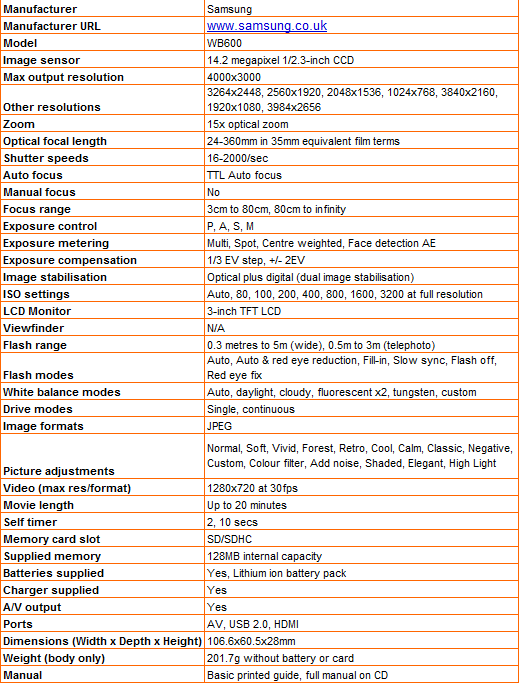
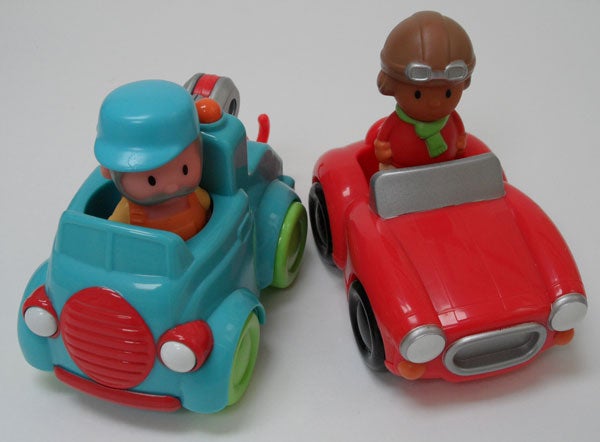
—-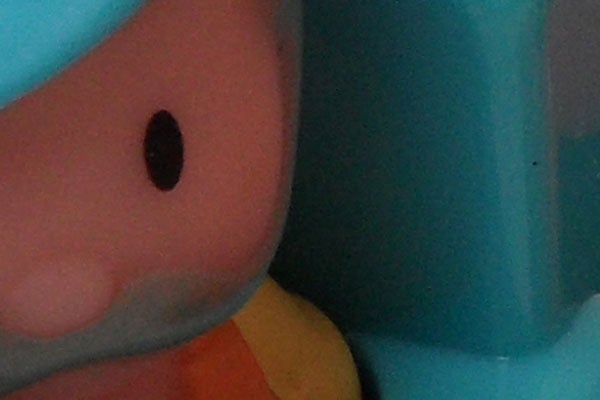
The WB600’s ISO range starts as low as ISO80. We wouldn’t expect to see noise creeping into shadow detail at this stage, but if you look for it, it’s there… even if subtly so.
—-
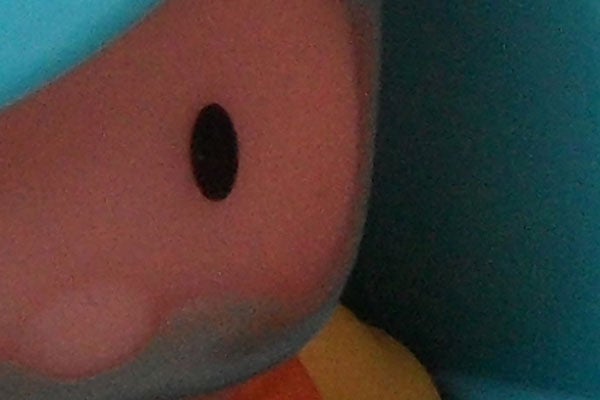
The same framing at ISO100 and noise is beginning to become more noticeable, particularly across the body of the light blue car.
—-
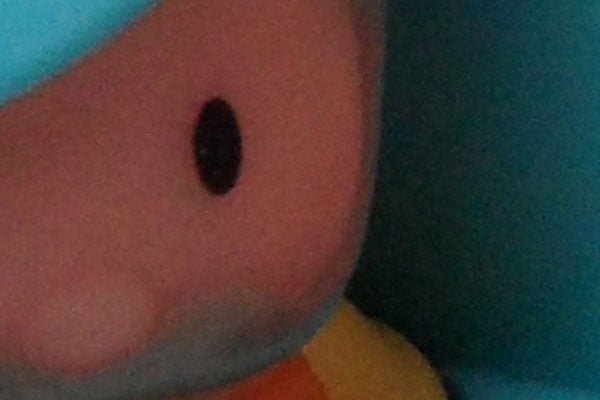
OK, so it may be subtle, but even at ISO200 the image is becoming more noticeably grainy over ISO100.
—-
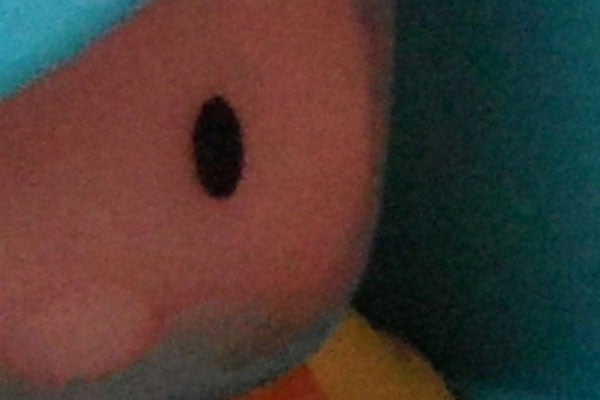
We’re at ISO400 and noise is visible across the whole of the image, though the red car disguises it better.
—-
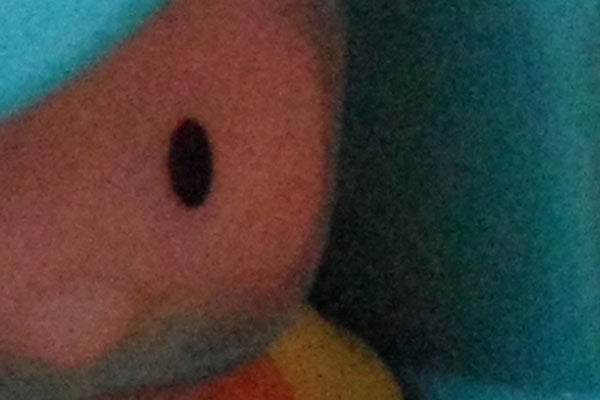
ISO800 and there’s noise, with matters getting incrementally worse.
—-

Looking at ISO1600, and we find a setting that would be best to avoid using unless pushed. We’re getting an overall sandy appearance and notably losing edge definition.
—-
…At ISO3200 it appears as if we’re viewing our test image through frosted glass as the frame takes on a distinctly impressionistic appearance.
—-
”’A more general selection of test shots are revealed on this page and next to act as an evaluation of the Samsung WB600 in a variety of shooting conditions.”’
—-

With the WB600’s mode dial set to the scene and subject recognising Smart Auto, the camera correctly deduced it should switch to macro/close up mode. The degree of detail on display, plus natural if moderately warm colours, are very impressive for a camera in this price bracket
—-

By way of contrast next we have a shot taken at the extreme telephoto end of the WB500’s optical zoom, handheld and using available light. Again, when the WB600’s images are sharp, they’re sharp indeed, picking up every detail of this duck’s plummage. Usually at this range on a compact camera we’d expect and forgive a degree of softness.
—-
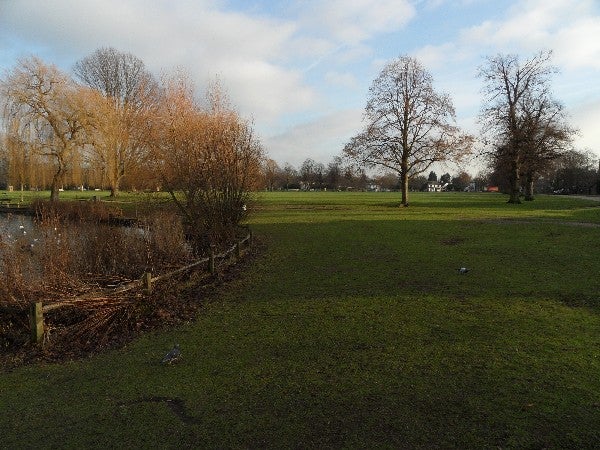
And for comparison this is a shot taken at the wide angle end of the zoom range. The WB600 has provided a good degree of edge to edge softness, with no tell-tale corner softening, nor is there much in the way of barrel distortion – if any. On the whole a surprisingly good showing from the Samsung.
—-
”’Here are some general test shots taken with the WB600 to give an idea of performance ability when it comes to image quality, dynamic range, colour rendition and the focal range of the respective optics.”’
—-

Here’s a tricky exposure for any camera at any level – a dark foreground and a bright, largely featureless sky as the background. Incredibly the WB6000 has managed to maintain detail in both, providing an image which is pretty much a match for how the eye saw it at the time.
—-

It’s not all good news however. White balance is rarely but here slightly off kilter, producing a decidedly cool looking image that would greatly benefit from an application of Auto Levels in Photoshop and adjustment for brightness contrast to give depth to the rather flat image.
—-

Here’s a slightly wider framed image taken from exactly the same vantage point that reveals a closer result to how the colours in the scene should look, with much deeper (and warmer) browns.
—-

Generally the WB600’s colour balance errs on the side of natural, as this swimming duck shot, taken again at maximum telephoto and in the golden light of late-ish afternoon, reveals.
—-
Trusted Score
Score in detail
-
Value 9
-
Image Quality 8
Features
| Camera type | Digital SLR, Digital Compact |
| Megapixels (Megapixel) | 12 Megapixel |
| Optical Zoom (Times) | 15x |
| Image Sensor | 14.2 megapixel, 1/2.3-inch CCD |
| Optical focal length | 24-360mm in 35mm equivalent film terms |
| Shutter speed | 16-2000 secs |
| Auto focus | TTL Auto focus |
| Manual focus | No |
| Max output resolution | 4000x3000 |
| Other resolutions | 3984x2656, 3840x2160, 3264x2448, 2560x1920, 2048x1536, 1024x768, 1920x1080 |
| Focus range | 3cm to 80cm, 80cm to infinity |
| Exposure control | P, A, S, M |
| Exposure metering | Multi, Spot, Centre weighted, Face detection AE |
| Exposure compensation | 1/3 EV step, +/- 2EV |
| Image Stabilisation | Optical plus digital (dual image stabilisation) |
| ISO settings | Auto, 80, 100, 200, 400, 800, 1600, 3200 at full resolution |
| LCD Monitor | 3-inch TFT LCD |
| Viewfinder | N/A |
| Flash range | 0.3 metres to 5 m (wide), 0.5m to 3m (telephoto) |
| Flash modes | Auto, Auto & red eye reduction, Fill-in, Slow sync, Flash off, Red eye fix |
| White balance modes | Auto, daylight, cloudy, fluorescent x2, tungsten, custom |
| Drive modes | Single, continuous |
| Image formats | JPEG |
| Picture adjustments | Normal, Soft, Vivid, Forest, Retro, Cool, Calm, Classic, Negative, Custom, Colour filter, Add noise, Shaded, Elegant, High Light |
| Video (max res/format) | 1280x720 at 30fps |
| Movie length | Up to 20 minutes |
| Self timer | 2, 10 secs |
| Memory card slot | SD/SDHC |
| Supplied memory | 128MB internal capacity |
| Batteries supplied | None |
| Charger supplied | Lithium ion pack |
| A/V output | Yes |
| Charging/Computer Connection | USB 2.0 |
| HDMI | HDMI |
| AV Out | Yes |
| Manual | Basic printed guide, full manual on CD |
Physical Specifications
| Dimensions Width (Millimeter) | 106.6mm |
| Depth (Millimeter) | 60.5mm |
| Weight (body only) (Kilogram) | 201.7g without battery or cardkg |

